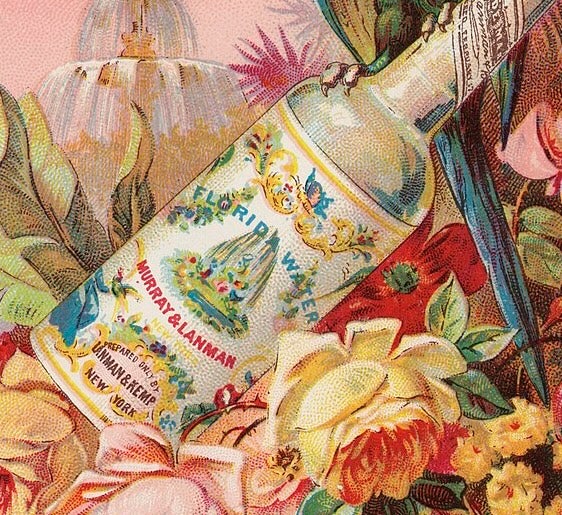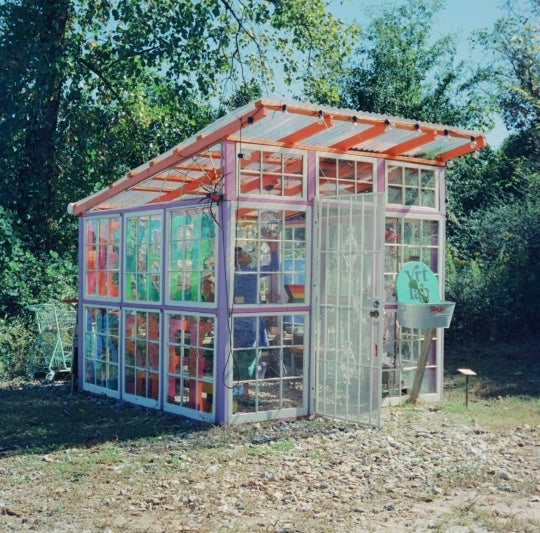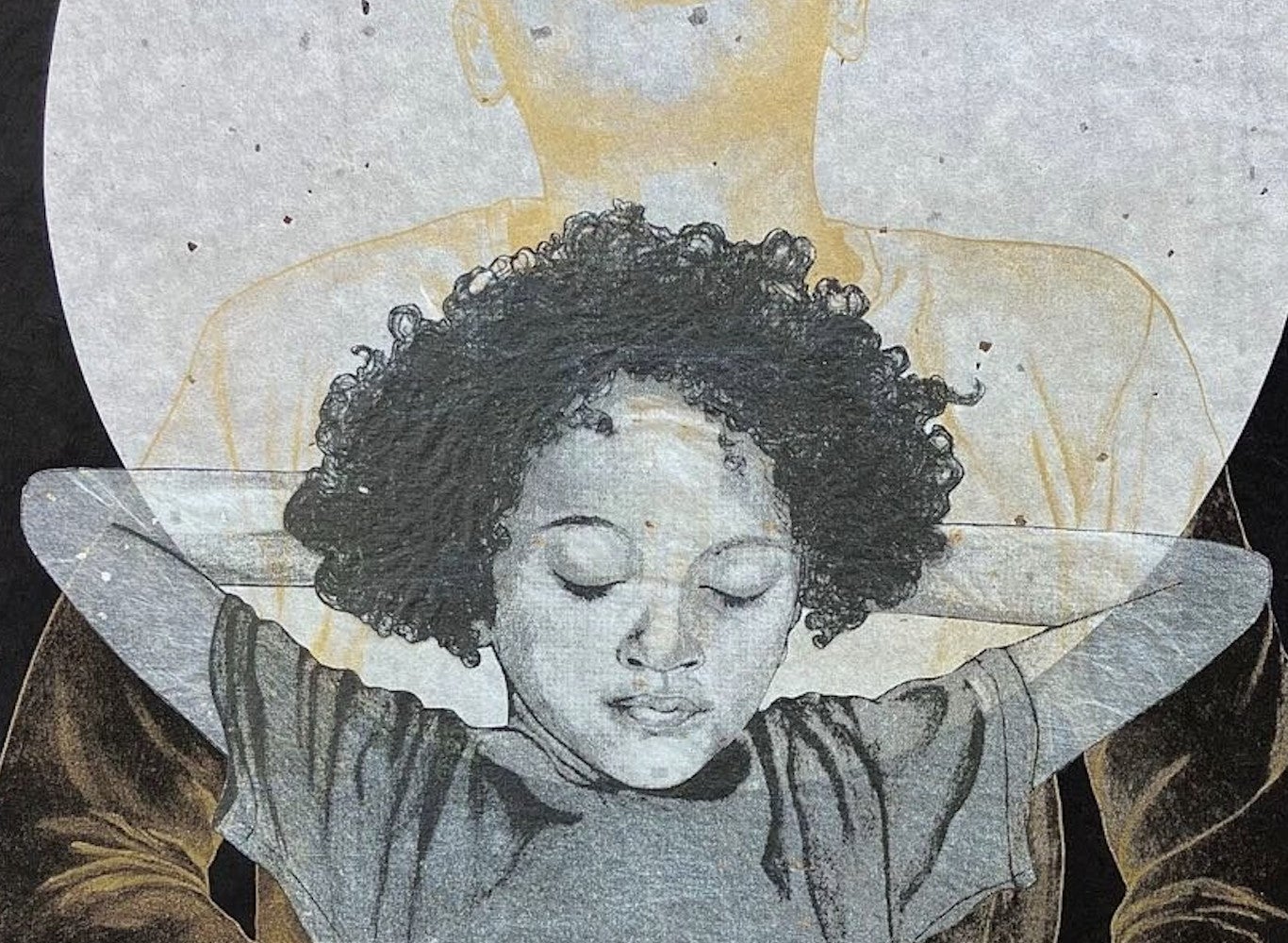
Henry Detweiler has had a busy year. Following his residency-cum-performance piece No Vacancy with Dashboard Co-op in Downtown Atlanta, he became the Gallery Director for MINT. We met at his house in Reynoldstown to talk about his process and what’s next.
Susannah Darrow: How are you doing today, Henry?
Henry Detweiler: I’m doing great.
SD: What was the best thing to happen to you today?
HD: The best thing that happened to me today was that I realized I was very tired around two o’clock, and I got a coffee.
Laura Hennighausen: How do you take your coffee?
HD: Well, today I took it iced, with a little bit of half-and-half.
SD: What’s that animal in your fireplace?
HD: Oh, that’s a lion that I made for Xperimental Puppetry Theater this year, I collaborated with a dancer whose project was funded by the Center for Puppetry Arts.
SD: Who’s the dancer?
HD: Her name is Hannah Rose Broom.
LH: So, you’ve been doing a lot of collaborations this year.
HD: That’s pretty typical. Usually collaborations are about me helping someone realize their vision and not so much someone helping me make my own work or something that feels like mine.
SD: Do you think that having that collaboration with your audience is also important? In No Vacancy audience participation in choosing the jukebox song was necessary in order to determine what the next performance would be. In Meta Quotient at MINT you couldn’t even see what the artwork you’d chosen was until you looked up the QR code on your phone. What drives you to put that component in your work?
HD: I think that’s just really exciting, to take a measure of control away from myself and give control to the audience. That way, I don’t know what to expect and it either, in the case of No Vacancy, keeps you on your toes or in the moment, and with Meta Quotient it was nice to see how people interacted with it.
LH: Has it ever gone awry for you? Has anyone ever spoiled the experience?
HD: No, I think it’s always enhanced it. Just seeing people make friends and interact with that exhibition, like in a nontraditional artwork. I feel that a lot of people go to an art show to be very closed off, to just focus on this thing, and there’s a social awkwardness if you don’t know anyone else at the show. But at Meta Quotient, because it was so inaccessible unless you had an iPhone—granted that’s going on two years ago now, so not everyone had an iPhone—there were connections being made. People asked, “Oh, can I see that? Can I look on your phone with you?” So, it was a friendly thing. And a similar thing happened at No Vacancy. I was obviously involved with performances at that time, but there was definitely a group of people that huddled around a jukebox, selecting tracks. So you’d hear, “Oh, I don’t think I’ve seen this one!” It’s exciting to see the way people interact, which is unpredictable, totally unpredictable.
LH: Is that part of the reason you were excited to take on your new role as the gallery director of MINT? You help people interact with the space.
HD: Yeah, I think that’s part of it. It’s just another aspect of working with artists, like working with curators, just helping people realize what they want to do. I think that’s kind of why we’re on the Internet and now want to launch some experiments. It gets crowds of people who wouldn’t necessarily come to our gallery, unless it was to do yoga, or to see a music show. At our first Music at MINT show, 60 kids came to the gallery who wouldn’t have seen the show otherwise.
SD: As part of your vision for that space, do you do more interdisciplinary programs, to have more interaction?
HD: I think so. It’s such a great space, it doesn’t necessarily have to function solely as an art gallery. We just want to do as much as we can, whatever form that takes.
SD: I wanted to ask you about chevrons, because clearly you like the pattern a lot. Almost everything you do has chevron in it. I also like the pattern myself. Can you speak to your love of chevron? Is it just aesthetic, or is it some deeper relationship?

HD: I started using the chevron pattern first in my paintings. I’m interested in the ideas behind modernism, and the heroic status of those painters. Frank Stella is a major. But I also question how well that work stands up through a contemporary lens, and how relevant it is, and how I can play with some of those ideas in my own way. So, I wanted to make shaped canvases à la Frank Stella, but then rather than make an allover pattern, I wanted to do one that just cuts across the form, and creates this wavy seasickness feeling. I wanted to give the viewers the experience of standing in front of a Barnett Newman piece at the Museum of Modern Art and becoming kind of nauseated. I wanted to make people nauseated. The pattern is the seasickness. I also used to get migraines as a child, and a lot of people who get those see auras that have a zigzag pattern cutting across their field of vision. I wanted to reference that, too, so it’s a bit like nausea.
SD: Was the inside of the No Vacancy building like a giant shaped canvas to you?
HD: Yeah, I think that the decision to cover every surface in that way was not as much about playing with the ideas of modernism as wanting to create an inescapable environment for viewers to experience.
SD: That piece was really performance-based. Was it a collaboration between you and these performers, or did you create the space and set it all up beforehand? Do you think you’ll be more interested in performance-based work now?
HD: No Vacancy was a pure collaboration between Ben Coleman and me. Even covering the space with the chevron pattern was a mutual decision. I don’t feel ownership of any one part of it. Every aspect of No Vacancy was the result of our conversations.
SD: The Kevin Byrd and William Schweigert show was the first exhibition that you curated. Is that the direction you want to take MINT’s programming?
HD: I think so. I want to bring some focus to the exhibition program, but I don’t want MINT to lose the bigger group shows that we’re known for. I want to do a mix of some tightly curated things, but then also bring in guest curators to do group shows.
SD: Do you have any guest curators lined up?
HD: Chanel Kim is going to be doing a show with us at the beginning of 2014, and before that we have the big group shows.
SD: What do you think will be next for you as an artist?
HD: “Next,” as far as—what will I do next? I would like to do some residencies before going for my MFA. I’m going to the Vermont Studio Center from November to December; I think that’s going to be really useful just to be in the cold and make paintings or something.
LH: What’s your spirit animal?
HD: Rachel [Reese] warned me about this question, and I had no idea. She said, “They’re going to ask you your spirit animal,” and I had no idea. So I looked up an online quiz.
SD: Oh! Where did you take the quiz?
HD: I Googled “What is my spirit animal,” and it was the first thing that came up.
SD: What was it?
HD: I’m an owl.

SD: That actually is kind of . . . it’s not inappropriate.
HD: It said something like, “The owl: the human lie detector.”
LH: Do you feel like you function as a lie detector sometimes?
HD: Yeah, sometimes—usually.
SD: You can read people pretty well?
HD: I can read people pretty well.
LH: Interesting. We’ve never had an owl before.
SD: So tell us something about yourself that nobody knows.
HD: That nobody knows? I’m a pretty open book. I really don’t like keeping secrets. They stress me out.
SD: Do you have any siblings?
HD: I don’t, I’m an only child. My mom is one of three, and my dad is one of thirteen. I have some pretty selfish tendencies, but I think it’s beneficial selfishness. I want things to be good for me and for everyone, by virtue of things being good for me.
SD: Do you think being an only child is part of the reason you wanted to collaborate so much with other people? Is that why you’re not a solo artist?
LH: Are you longing for a sibling?
HD: Maybe. Maybe I’m trying to find my long-lost spirit sibling. I think my collaborations have just been like extensions of friendships a lot of the time, so it’s been pretty natural. I don’t know if I’m seeking anything in particular. I don’t necessarily seek out collaborations; they kind of fall into my lap.
LH: Have you ever done any modeling?
HD: Yes. For photographer Patrick Heagney, for a series of work that was in a show at Kai Lin, two years ago.
SD: What did you model? Your body?
HD: My body was there, for sure. I was in a yellow singlet thing, and then he took a series of photographs of that. And in the rest I was wearing white clothes, I was painted white, and the original series of photographs was projected onto my body, and in a similar pose.
SD: Have you ever been a suit model?
HD: No. I’ve rarely worn a suit.
SD: I feel like you would be a good suit model.
HD: I don’t know. If I get free suits, I’ll do anything.




